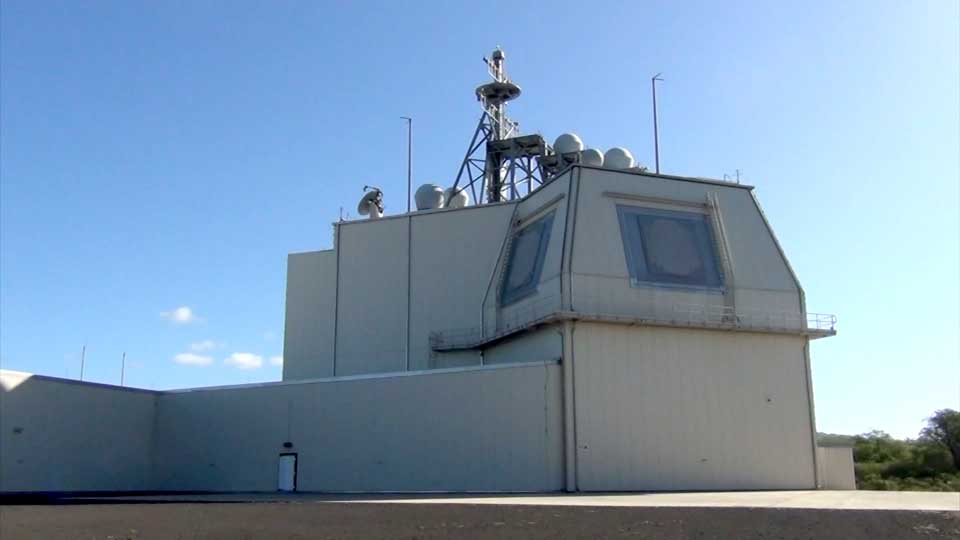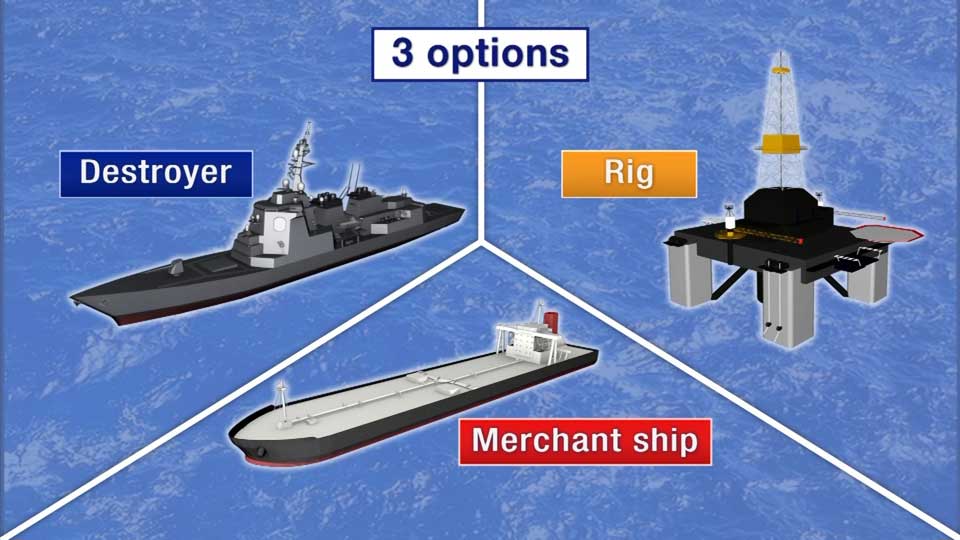Almost $690 million would be for boosting space capabilities, including the development of a surveillance satellite. The ministry has earmarked about $340 million for the creation of a cyber-security unit within the Self-Defense Forces. And it wants more than $730 million to develop a replacement for the SDF's F2 fighter jet.
An unspecified amount would go towards creating a new missile defense policy. That is one of the new government's most pressing issues after its predecessor scrapped plans to deploy the land-based Aegis Ashore system.
Aegis Ashore was supposed to add an extra layer of defense to a system that includes sea-based Aegis destroyers and PAC3 interceptors. The land-based Aegis Ashore would intercept ballistic missiles outside the Earth's atmosphere. The government announced the plan in 2017 after North Korea launched a series of ballistic missiles.
But the ministry scrapped the plan in June, saying it would be too costly and take too long to ensure that the rocket boosters can land safely.

Members of Japan's national security circle are now engaged in heated discussions on alternatives to the Aegis Ashore system. They are looking at sea-based systems for radars and launchers, and have proposed three options: building new destroyers for them, place them on commercial merchant ships, or build offshore structures similar to oil rigs.

Murano Masashi, an expert on Japan-US security policy at the Hudson Institute, says all three options have vulnerabilities.
"Using tankers might be cheaper than building new aegis destroyers, but they're more vulnerable to attack and inferior in terms of self-defense capabilities. Putting systems on a rig would be vulnerable to torpedoes and underwater sabotage."
And he says building new destroyers would fail to address a chronic shortage people in the Maritime Self Defense Forces who can operate Aegis systems.
"Forcing any sea-based plan on the MSDF would lead to a reduction in their readiness," he says. The Aegis Ashore plan was designed to reduce the burden on the Maritime Self-Defense Forces, but the sea-based alternatives would do exactly the opposite.

Murano believes the Defense Ministry should be considering land-based options, too. He says they should be looking at alternative deployment locations for Aegis Ashore, or considering deploying the radar and the launcher separately, which would lower the footprint and perhaps diminish local objections.
"But the ministry has narrowed its focus to the sea-based options because they're thinking of the political costs. Negotiating again with people living near the proposed locations would incur a really high cost."
Ruling party lawmakers are reviewing the Defense Ministry's proposals, but say they need to conduct feasibility studies because there are few instances of any of these options being instituted, and they fear that costs could spiral.
The Defense Ministry says it aims to make its choice and announce a price by the end of the year.

